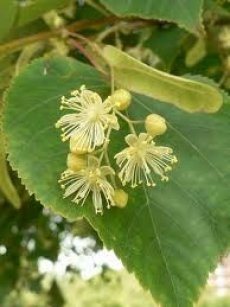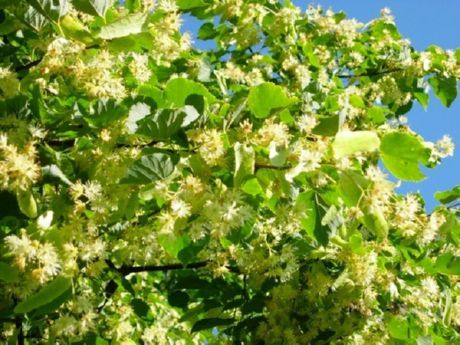New publications
Hidden health benefits of linden
Last reviewed: 01.07.2025

All iLive content is medically reviewed or fact checked to ensure as much factual accuracy as possible.
We have strict sourcing guidelines and only link to reputable media sites, academic research institutions and, whenever possible, medically peer reviewed studies. Note that the numbers in parentheses ([1], [2], etc.) are clickable links to these studies.
If you feel that any of our content is inaccurate, out-of-date, or otherwise questionable, please select it and press Ctrl + Enter.

The time of linden blossoming in Ukraine is “specified” by the name of the month – “lipen”, that is, July. And although in Ukraine linden never waited for its appointed time of blossoming, this year the linden blossom pleased much earlier – in May.

For many, this is a real event. Both in the forest and on the street, you can hear everywhere: "The linden has blossomed! The linden is blossoming!" At this time, the entire area is filled with a wonderful and delicate aroma. The linden inflorescence has 3-15 flowers, each of which consists of five petals and sepals with nectaries and many stamens. The flowers are not bright, not lush, but when the tree is in full bloom, the branches bend under their weight. The crown becomes pale golden, as if covered in nectar and sprinkled with honey.
Of course, every tree is different, but most of the city's linden trees have already opened their fragrant flowers. The linden does not bloom for long - only 10-12 days, but this time is enough for adherents of traditional medicine, who have not yet been noticed near the flowering trees.
What beneficial properties does linden have?
Linden flowers contain the glycoside talicin, flavonoid glycosides, vitamin C, and carotene.
The triterpene compound tiliadin and up to 8% oil have been found in linden bark. Linden flowers, or “linden blossom”, are used in medicine in the form of infusion and decoction. Linden preparations are used as a diaphoretic (the glycoside tiliacin has a diaphoretic effect) and antipyretic agent for colds, gastritis, and also for gargling the mouth and throat as a bactericidal agent. The healing properties of linden are associated with quercetin and kaempferol. Tiliac has phytoncidal (bactericidal) activity. Linden flowers are widely used in folk medicine in various countries as a strong diaphoretic, diuretic, anticonvulsant, anti-inflammatory and analgesic. “Linden blossom” infusion is recommended for colds, headaches, fainting, for gargling with sore throats and the mouth with inflammatory processes.
Many medicinal preparations are made from linden blossom, which, thanks to the medicinal properties of linden, increase the secretion of gastric juice, increase bile formation and facilitate the flow of bile into the duodenum, and have diaphoretic properties.
In addition, linden inflorescences have a mild sedative effect on the central nervous system, and slightly reduce blood viscosity. The healing properties of linden are due to the complex of biologically active compounds of the plant.
Preparations from linden inflorescences have antimicrobial, anti-inflammatory and emollient effects, are used for rinsing the mouth and throat in inflammatory diseases and sore throats. Linden flowers are included in some infusions. In the form of poultices and lotions, a decoction of linden inflorescences is used for burns, ulcers, inflammation of hemorrhoids, rheumatic and gouty pain in the joints. Linden flowers are also used instead of tea for brewing with other medicinal plants or together with tea. Linden tea has a pleasant aroma, golden color and has many healing properties.
Infusion and decoctions of linden inflorescences are used as a diaphoretic and antipyretic agent for sore throat, bronchitis, colds, as a sedative for increased nervous excitability in adolescent and elderly patients. The medicinal properties of linden decoctions are used to improve the functions of the gastrointestinal tract, and are also used as a choleretic agent and for increased acidity of gastric juice. Linden inflorescence extract is also used for mild digestive and metabolic disorders.
